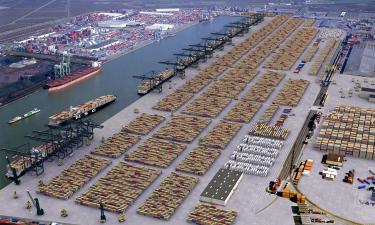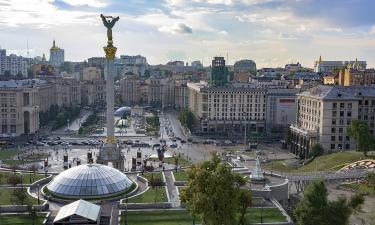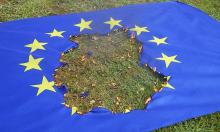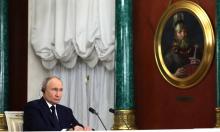Putin bows to Icon of Our Lady of Tikhvin
On Friday Russian President Vladimir Putin visited Tikhvin (Leningrad region). He was accompanied by his authorized representative to the North-western Federal District Ilya Klebanov, governor of the Leningrad region Valery Serdyukov, and head of the Tikhvin district Alexander Lisin.
The Russian leader visited the Tikhvin Assumption monastery and bowed to the wonderworking icon of Our Lady of Tikhvin.
Yevfimy, monastery's father superior, and some parishioners greeted the head of state. Vladimir Putin talked to them and entered the Assumption Cathedral.
He came up to the wonderworking Icon of Our Lady of Tikhvin, which was outside Russia for sixty years.
The icon's destiny is closely linked with various events in Russia's history. It is known as Russia's patron and defender and healer of sick and ailing people.
The President stood by the holy image placed in a special icon-case, kissed it and put a candle by the icon.
The head of state was also accompanied by priest Sergy Garklavs who brought the icon back to the Tikhvin monastery. He told Vladimir Putin about the icon's history and travels. According to him, 300,000 people in Moscow, St. Petersburg and Tikhvin bowed to the icon over three weeks since its return to Russia.
The icon of Our Lady of Tikhvin is one of the most esteemed and worshipped Orthodox shrines.
According to Church tradition, it came from the brush of St. Luke the Apostle and Evangelist in Virgin Mary's lifetime on earth and was originally available in Jerusalem. In the 5th century the icon was moved to Constantinople.
The icon is believed to have been miraculously transferred to Russia in 1383, with its radiance first standing out above the waters of Lake Ladoga. Floating on by air, the icon stopped in the marshy area on the banks of the Tikhvinka river. There where the shrine made its first appearance a wooden church was built to be replaced inthe 16th century on Prince Basil III's order by a stone five-domed cathedral. Later, Ivan the Terrible founded the Assumption monastery there. The monastery was closed in the mid-1920s.
In 1941 Tikhvin was occupied by the Nazi troops and the wonderworking icon was taken to Pskov where the Nazis collected values from the Novgorod and Leningrad regions.
In 1944 the icon was handed to the Pskov Orthodox mission and transferred to Riga after that. It was kept by Bishop John Garklavs.
In September 1944 he had to leave Latvia and settled in Chicago some years later. Before his death the bishop blessed Father Sergy to return the icon to the Tikhvin monastery, when the Orthodox Church regained it.
The monastery revived in 1995 and the first divine service was held in its cathedral in July 1997.
On July 9, 2004 the shrine returned to Tikhvin. On that day Patriarch of Moscow and All Russia Alexis II gave the Tikhvin monastery an act confirming its right to the eternal custody of the miracle-working icon of the Mother of God, returned from the United States.
According to archeologists, the surroundings of Tikhvin were populated 3,000 years before Christianity. However, the first record of Tikhvin dates back to 1383 and is linked with the miraculous appearance of the icon above the Tikhvinka River.
Tikhvin had a beneficial geographic position on the sea and river route from Scandinavia via Russia to the Mediterranean area. The Tikhvin icon, which became widely known in the 16th century, ensured Tikhvin's development as a Russian spiritual center.
Subscribe to Pravda.Ru Telegram channel, Facebook, RSS!





